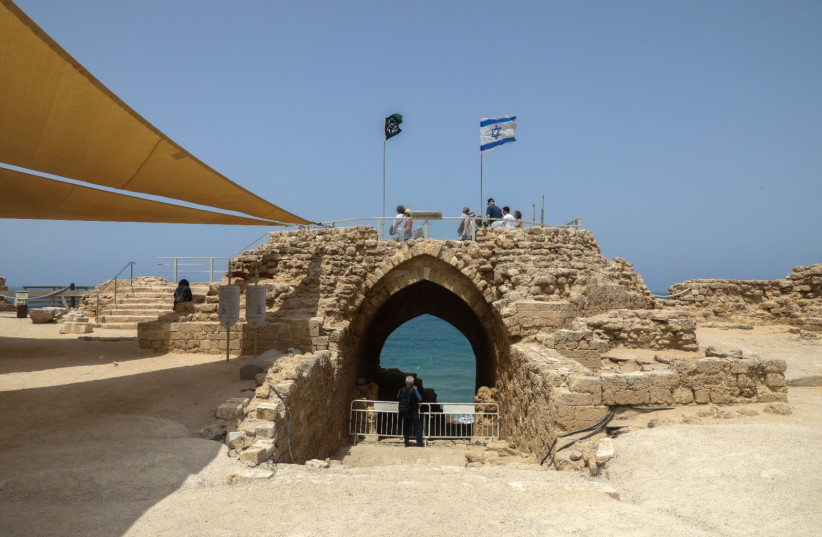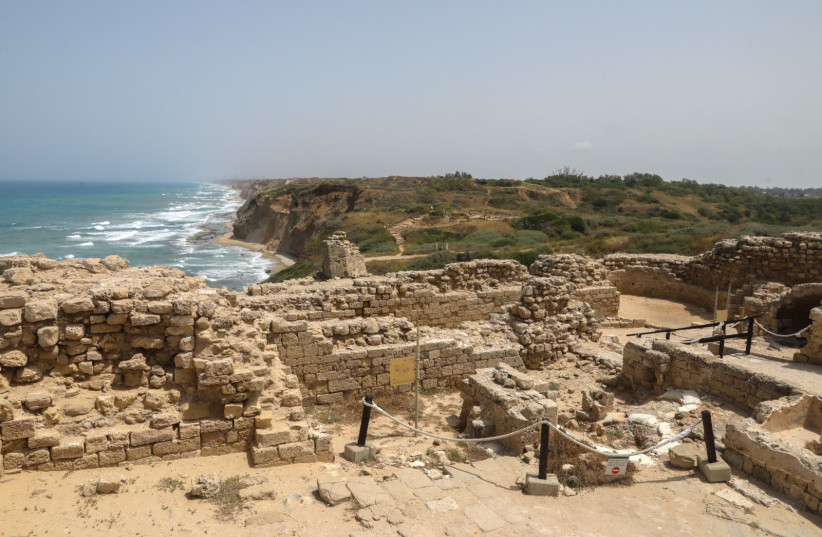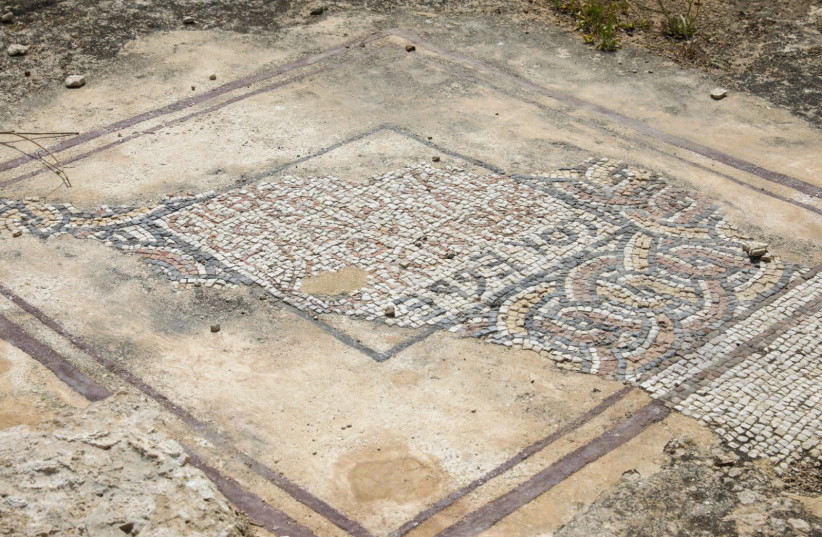New excavations could uncover final days of besieged Crusader fortress
In 1261 the fortress was leased to the Crusader Knights Hospitaller who began its fortification. Just four years later, in 1265 CE the fortress fell to the Mamluks who razed it to the ground.

A new season of excavation work is scheduled to begin May 16 at the ruins of the Apollonia-Arsuf Crusader fortress. It was there that a final, fierce, three-day battle took place in 1265 between the besieged Crusaders of the Knights Hospitaller and the forces of Mamluk Sultan Baybars attacking from the sea.
The structure was built on a fossilized sandstone dune overlooking the Mediterranean Sea in the northwestern part of modern-day Herzliya. The fortress, where surviving defenders of the city had taken refuge, finally fell on April 26, 1265, after a 40-day siege.
With some 1,000 of their warriors, including 90 knights, killed in the battle, the Hospitallers negotiated their surrender on the condition that the survivors be permitted to leave. However, after initially agreeing to the terms, Baybars broke his word and all the Christian prisoners were taken into slavery. The sultan also forced them to participate in the systematic demolition of their own stronghold, razing the entire city of Arsur to be left in ruins.
In 2009, archaeologists were intrigued by a statue of a half-rooster, half-snake French medieval mythological creature called a Basilik, found on the lower level of the fort. Now, finally, they will begin excavating the area. The statue was found in excavations on the cliff on the west side of the crusader fort, just above the central hall.
The project at the Apollonia National Park will build on previous excavations to provide access from the primary floor of the fortress to the sea entrance and exterior sea wall. When complete, visitors will be able to experience a scenic path restored to historic accuracy. It will feature a stone donkey path/walkway and outlet to horse stables built on the cliff just above the sea, and the planned two new rooms. The room excavations are part of separate projects.

Apollonia National Park. (credit: MARC ISRAEL SELLEM/THE JERUSALEM POST)
The NIS 1.5-2 million project is being co-funded by the Israel Nature and Park Authority, which will provide NIS 900,000; and by the Israel Nature and Heritage Foundation of America, which teams up with tech entrepreneurs to help the INPA restore historical sites and which has donated NIS 650,000 for the project.
“We think there are a lot of artifacts buried in this room,” said archaeologist and tour guide Hagi Yohanan, pointing at the two meters of dirt they are expecting to excavate to reach the floor. “After we excavate to the floor, we want to reconstruct the arches.”
Yohanan is directing the excavation on behalf of Tel Aviv University under the lead of Prof. Oren Tal for the INPA.

Apollonia National Park. (credit: MARC ISRAEL SELLEM/THE JERUSALEM POST)
Abutting the medieval arches of the outer wall are the remains of a perpendicular wall the Crusaders built as they prepared for battle against the Mamluks, transforming what had once been a dramatic open area to the sea into a closed protected hall, Yohanan said.
“The Hospitaller Knights were preparing themselves for war,” he said.
Standing at the sea cliff at the lower level, Yohanan points to protruding stones that he believes was a stairway leading down to a porch just above the sea. He dreams of someday reconstructing that as well.
AN ACADEMIC EXCAVATION at the site – previously used as a dumping ground for modern construction garbage – began in 1995 under Prof. Israel Roll of Tel Aviv University, who died in 2010. Following earlier excavations by Roll also with the Antiquities Authority, the main excavations of the site took place from 1998-2000. In 2001, the national park was opened, recalled Yohanan, who began working at the site in 1995 as Roll’s student.
Other finds at the site include a Roman villa; a Crusader residential quarter; semi-submerged remains of a Crusader-period anchorage harbor where small boats unloaded their wares; the city moat; and two mosaics including part of a mosaic floor from a Samaritan synagogue dating to the Byzantine period.
“We have only excavated about 5% of the site so far, with remains from the Crusader period being the most significant,” noted Yohanan. “During the Byzantine period, this was a mixed Christian-Samaritan community.”
The only mention of Apollonia in Jewish texts is in the Mishna, which mentions it as a place where the special blue tehelet dye used for ritual Jewish fringes, tzitzit, was made, said Yohanan.
The Crusader fortress of Arsour, where the newest excavations will take place, was built by Crusader leader Jean d’lbelin d’Arsour in 1241 as a fortified palace, dominating the harbor in the northern part of town. After his death in 1258 CE, control of the city passed to his son, Belian the First, who, finding it difficult to withstand attacks from Baybars’ forces, in 1261 leased the fortress to the Crusader Knights Hospitaller who began its fortification. Just four years later, in 1265 CE, the fortress fell to the Mamluks.
The fortress has three systems of fortification: a wide and deep moat; a first wall as the external fortification; and a second wall and donjon, or keep, which was a fortified tower built within a castle or fortress.
Also known as Tel Arshaf, the Apollonia site is rich in layers of archaeological history. Overlooking a natural harbor, it was founded by the Phoenicians who settled there at the end of the sixth century BCE, during the Persian period. They named it after Reshef, their war and thunder god. Here the Phoenicians produced their much-sought after purple dye from marine mollusks.
During the Hellenistic period, from the fourth to first centuries BCE, inhabitants of the site expanded the town, renaming it after the god Apollo. Apollonia flourished during the Roman and Byzantine periods when it was renamed Suzussa in the fifth to sixth century CE. It stretched over 70 acres with installations for processing agricultural products and manufacturing glass as well as a busy sea port.
During the Early Islamic Period, from the seventh to 11th century CE, a wall was built around the settlement which shrunk to 22 acres and was called Arsouf. In 1101 CE, the city fell to the Crusaders who changed the name to Arsour.
Following the defeat of the Crusaders at the battle of Hittin in 1187 CE, Muslims once again gained control of the city for four years, only to lose it in the Battle of Arsour in 1191 CE to the Crusaders as they swept to victory in the Holy Land.
“There is still a lot of work to do here,” said Yohanan. “There is a complete city underneath here. All you have to do is scratch the surface. In 1265, when it was destroyed, nobody rebuilt on top so today you don’t have to dig very deep to get to the archaeology.”
Crusaders Town Fortress Arsour Apollonia National Park
THIS PAGE WAS POSTED BY SPUTNIK ONE OF THE SPUTNIKS ORBIT BLOG

No comments:
Post a Comment
Stick to the subject, NO religion, or Party politics